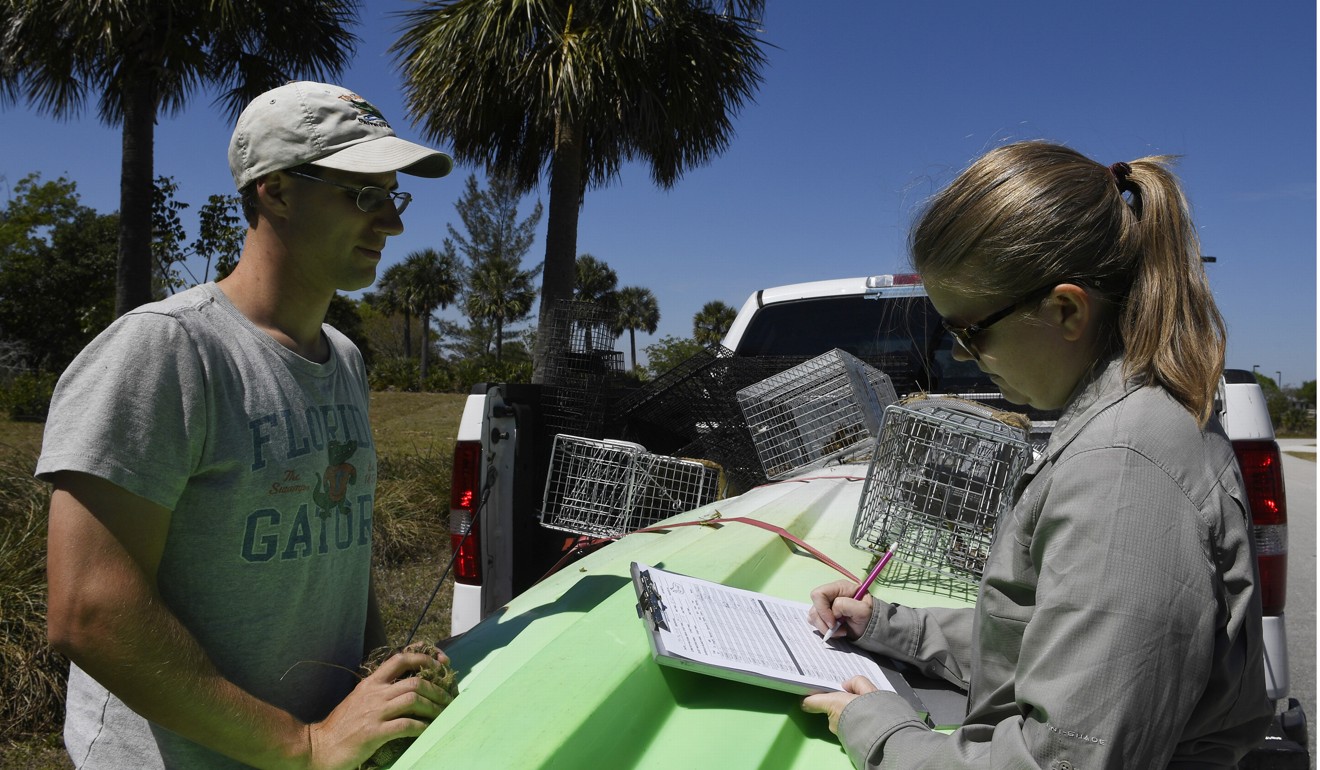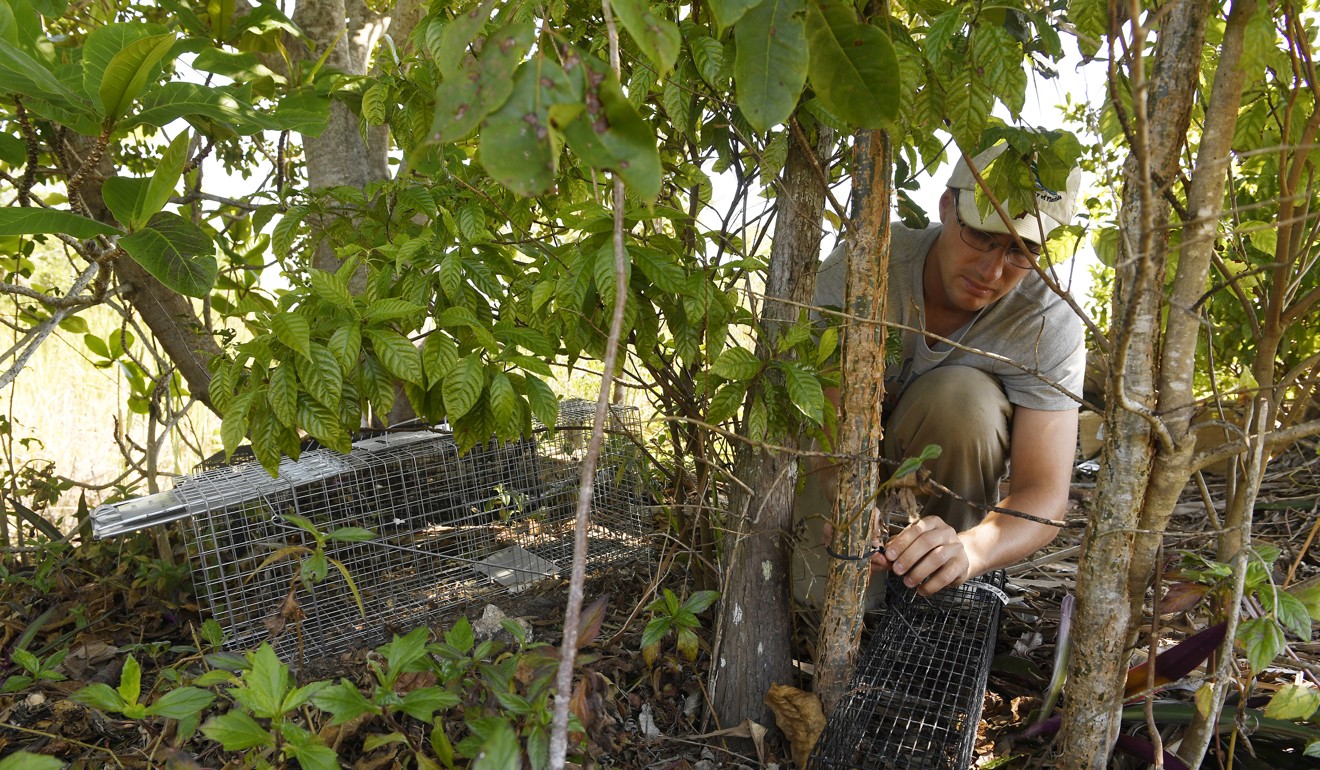
‘They must be destroyed’: tackling Florida’s iguana invasion head-on
Shooting bolts through their brains or slamming their skulls against brick walls, researchers are trying to find the most humane way of killing the creatures
Researchers are on a critical mission in the heart of Broward County – bashing in the brains of iguanas in an attempt to eliminate the reptiles that have overtaken South Florida.
A 15-member team from the University of Florida is using a tool called a captive bolt gun that sends a bolt into the brain, similar to what is used in the livestock industry. They are also smashing the creatures’ heads against solid objects, including a truck and boat they are using to track them down.
“Most of what we’re doing is blunt force trauma,” said Jenny Ketterlin, a wildlife biologist and research coordinator with the university. “Hitting their head very hard against a solid object.”

Destroying their brains quickly is the most humane way to kill them, she said. Decapitating the animals without anaesthesia would kill them but not be considered humane.
Their work is part of a US$63,000 research project, contracted by the Florida Fish and Wildlife Conservation Commission, designed to find the best way to remove iguanas and then offer tips to homeowners on how to purge the pests from their gardens.
“Iguanas are an invasive species in Florida and can be a nuisance to homeowners or impact native wildlife,” said Carli Segelson, a wildlife agency spokeswoman. “Iguanas can feed on native plants and wildlife and dig into areas that may cause erosion.”

The research team’s methods may sound gruesome but are in keeping with the state’s anti-cruelty laws, Ketterlin said.
So far, working in teams of two, the researchers have captured and killed 249 iguanas along a canal in Davie that runs parallel to Griffin Road. They sneak up on the creatures at night while they are asleep, then kill them on the spot.
But some manage to get away.
“We are using flashlights to find them,” Ketterlin said. “They are slow at first. If they are in a tree and wake up, they’ll jump into the canal or jump onto the ground and run off.”

Once they are captured and killed, the iguanas are placed in bags and taken back to the lab, where they are weighed and measured, Ketterlin said. They are then taken to a landfill in Homestead that accepts animal carcasses.
The team, based at the Fort Lauderdale Research and Education Centre in Davie, is also placing traps in county parks and using cherry tomatoes and watermelon as bait. But so far, the traps have only snared raccoons.
The three-month research project will continue until the end of May, Ketterlin said.
Dr Susan Kelleher, a Deerfield Beach vet who treats exotic pets, argued the head-bashing method is cruel. She says there’s a kinder way to send them to their deaths – sedate them and then euthanise them.

Davie resident Eric Swalley was unfazed by the use of force.
“I like all creatures but they are not in their native environment,” he said. “It’s a horrible thing we need to combat and try to get a handle on. It’s a biological nightmare.”
Gary Fishman, a Boynton Beach resident, says he has killed more than 100 iguanas with a pellet gun to protect his landscaping.
“The iguana does not belong here,” he said. “They need to be annihilated. They can’t be relocated. So they must be destroyed.”
Yet even Fishman said the idea of bashing in their heads “sounds like torture. The pellet gun is more humane, in my opinion”.

